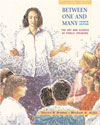 |  Between One and Many: The Art and Science of Public Speaking, 4/e Steven R. Brydon,
California State University, Chico
Michael D. Scott,
California State University, Chico
Researching and Supporting Your Message
SummaryThe process of researching to support your speech is like the
process of inventing a new product: You need both a source of inspiration and
the willingness to engage in hard work. - Begin by analyzing the situation and focusing on your audience.
- Choose an appropriate topic.
- Formulate a specific purpose you wish to accomplish.
Many types of support are effective in speeches: - Examples should be relevant, of sufficient quantity, and typical, and without
counterexamples.
- Facts should be from a reliable source, verifiable, recent, and consistent
with other known facts.
- Statistics should be from a reliable and unbiased source, based on fair
questions, from a representative sample. Polls should report the sample size
and margin of error. Know what percentages are based on and if the average
or mean is being cited exclusively.
- Expert opinion should come from a subject matter expert, who is reliable
and unbiased.
- Explanations should be clear and accurate.
- Descriptions should be accurate and vivid.
- Narratives should have probability (coherence) and fidelity for the audience.
Possible sources of information for your speech include: - library resources, such as books, periodicals, and databases
- the Internet, but with particular attention to distinguishing authentic
and reliable Web sites from questionable ones
- interviews
Develop a recording system for both sources and data: - Download computerized sources.
- Copy information onto note cards.
- Use selective photocopying to record information.
- Scan information directly into your computer.
|
|



 2003 McGraw-Hill Higher Education
2003 McGraw-Hill Higher Education